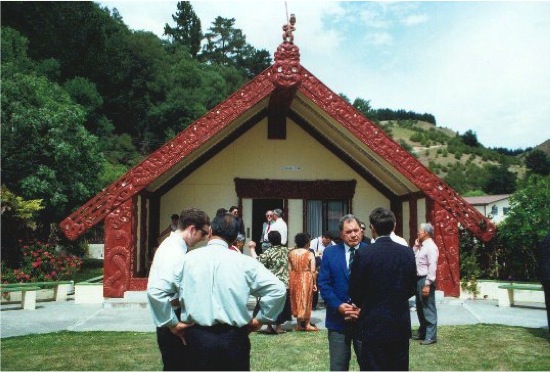Te Tiriti o Waitangi / the Treaty of Waitangi was not signed by our Hapū. Our Hapū acknowledge, nevertheless, Te Tiriti o Waitangi and value the possession of our lands and taonga as guaranteed in the second article of the Treaty.
For generations, our Hapū have sought redress for the many breaches of the Treaty by the Crown. We have made claims, petitions, submissions and taken legal action to seek redress for Treaty breaches.
Our Hapū have filed various claims with the Waitangi Tribunal, to have our grievances heard, reported on and acknowledged.
Led by Te Otane Reti, members of our Hapū were a part of the Wai 55 claim, which was lodged with the Waitangi Tribunal in 1988. This claim dealt with Te Whanganui-ā-Orotu, the Napier Inner Harbour, and addressed the rights and interests of Ngāti Tū and Ngāi Te Ruruku, and other hapū with rights and interests in Te Whanganui-ā-Orotu.
In 1992 our Hapū, together with other groups, lodged our joint claim in respect to the Mohaka-Waikare raupatu (confiscation), Wai 299. This claim covered the Mohaka–Waikare confiscation district, “which lay roughly between the Ahuriri block to the south, the sea in Hawke Bay to the south-east, the Mohaka block to the north-east, and the 39th parallel or provincial boundary to the north.”
The original Wai 299 claimants were Bevan Taylor, Gerald Southern, Arona Rangitere Taurima, Fred Reti, Rere Puna, Heitia Hiha, and Tania Hopmans.
The Hapū of Ngāti Tū and Ngāi Te Ruruku were also a part of the Wai 400 claim, which was lodged in 1993 and covered the former Ahuriri block, which was one of the three early Crown purchases in Hawke’s Bay arranged by Donald McLean in 1851.
One of our Hapū, Ngāi Tahu, also had claims to the lands within the Mohaka Block, Wai 119, which was also one of the early Crown purchases in 1851.
The Wai 119, 299 and 400 claims were heard by the Waitangi Tribunal as part of the Mohaka ki Ahuriri Inquiry, Wai 201.
Our Hapū were also part of the Wai 692 claim, which was lodged in 1998 and raised matters in relation to Napier Hospital and health services with both historical and contemporary aspects.


